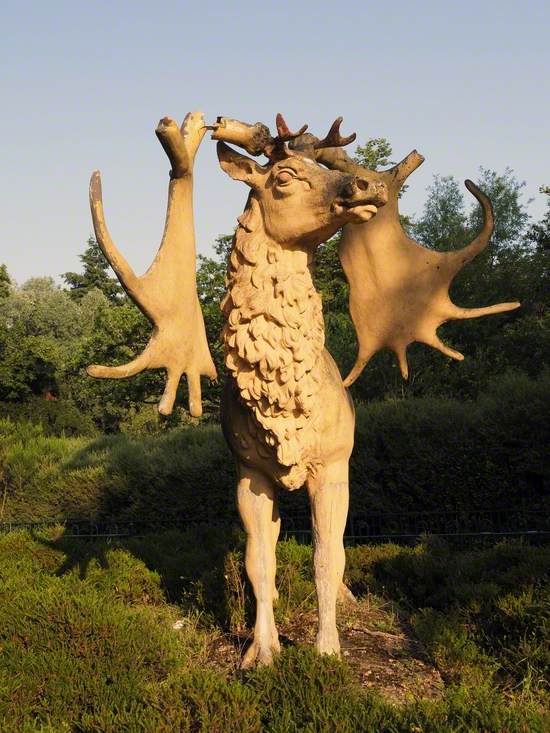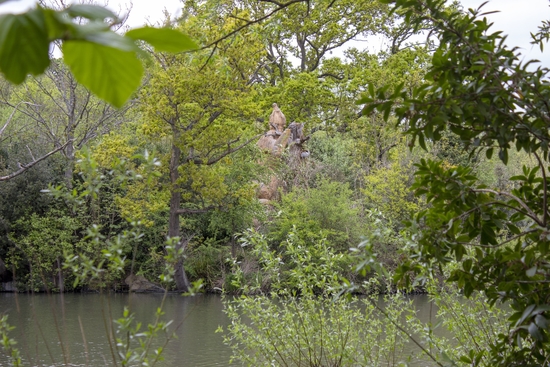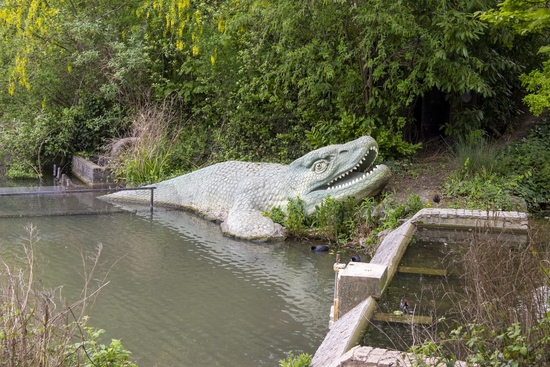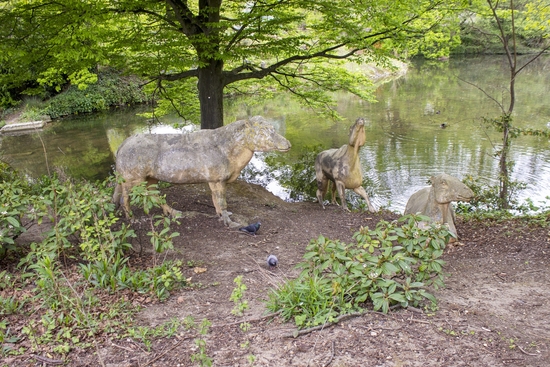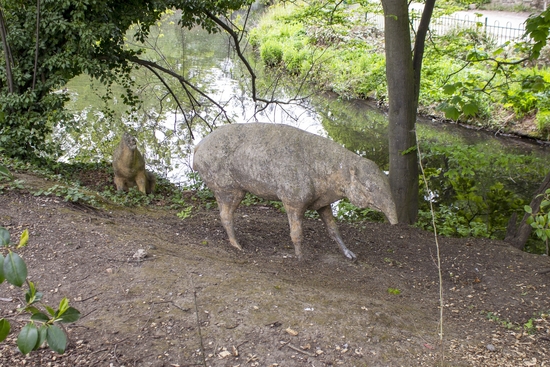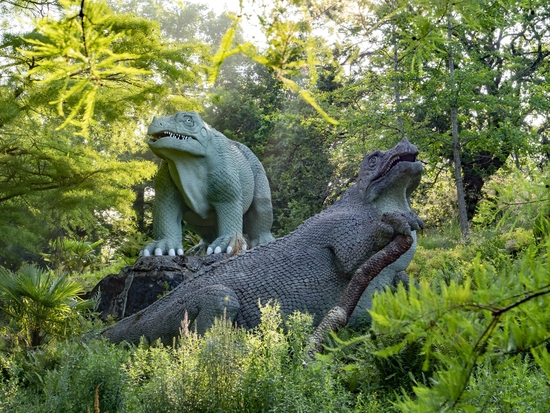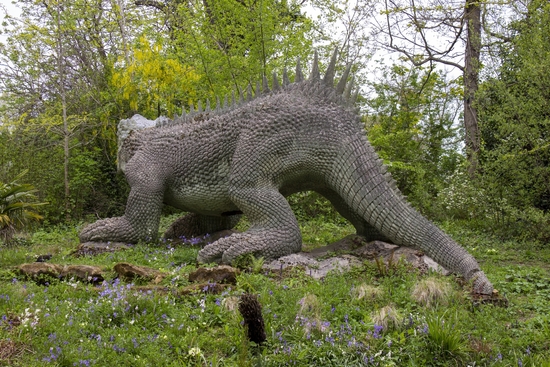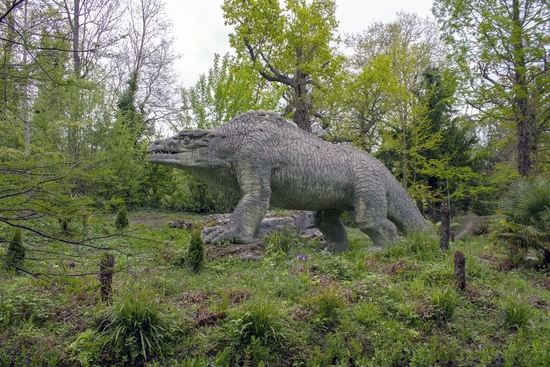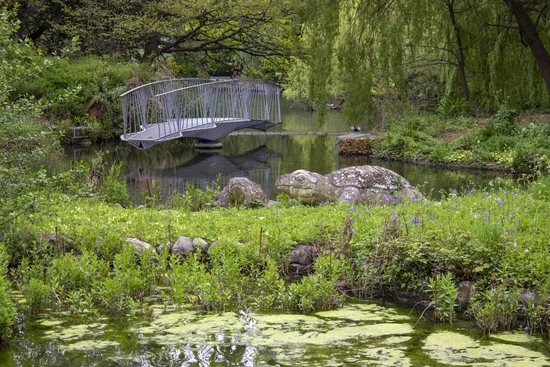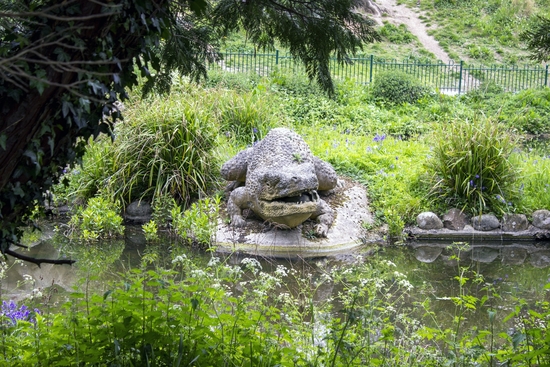This trail meanders through a scenic section of Crystal Palace Park in Bromley, around several lake islands.
The 'Crystal Palace Dinosaur' sculptures, made in the mid-1850s, are scientifically and historically important because they represent the first-ever attempt to model extinct animals as full-scale creatures referencing fossils. They remain mostly intact and in the same positions that the sculptor, Benjamin Waterhouse Hawkins, decided on. They fascinated the public in the nineteenth century, and remain a favourite and iconic fixture of South London.
More information is at http://cpdinosaurs.org and in Mark Witton and Ellinor Michel's book 'The Art and Science of the Crystal Palace Dinosaurs' (The Crowood Press, summer 2022).
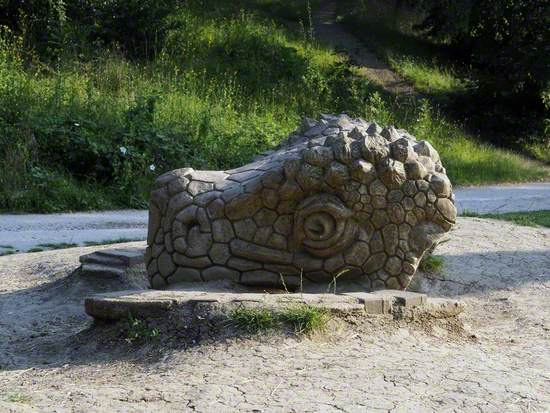
Image credit: Mike Longhurst / Art UK
1852–1855
Benjamin Waterhouse Hawkins (1807–1894)
Stone
H 80 x W 90 x D 100 cm
Walking up a slope away from the lakes sits a lone head of a Hylaeosaurus on the ground. The head is the original made by Hawkin's for the Hylaeosaur model which stands by the lake (its current head is a replica).
More information about all the dinosaurs, plus artistic renderings of the animals by Mark Witton which factor in the latest scientific knowledge can be found at http://cpdinosaurs.org
